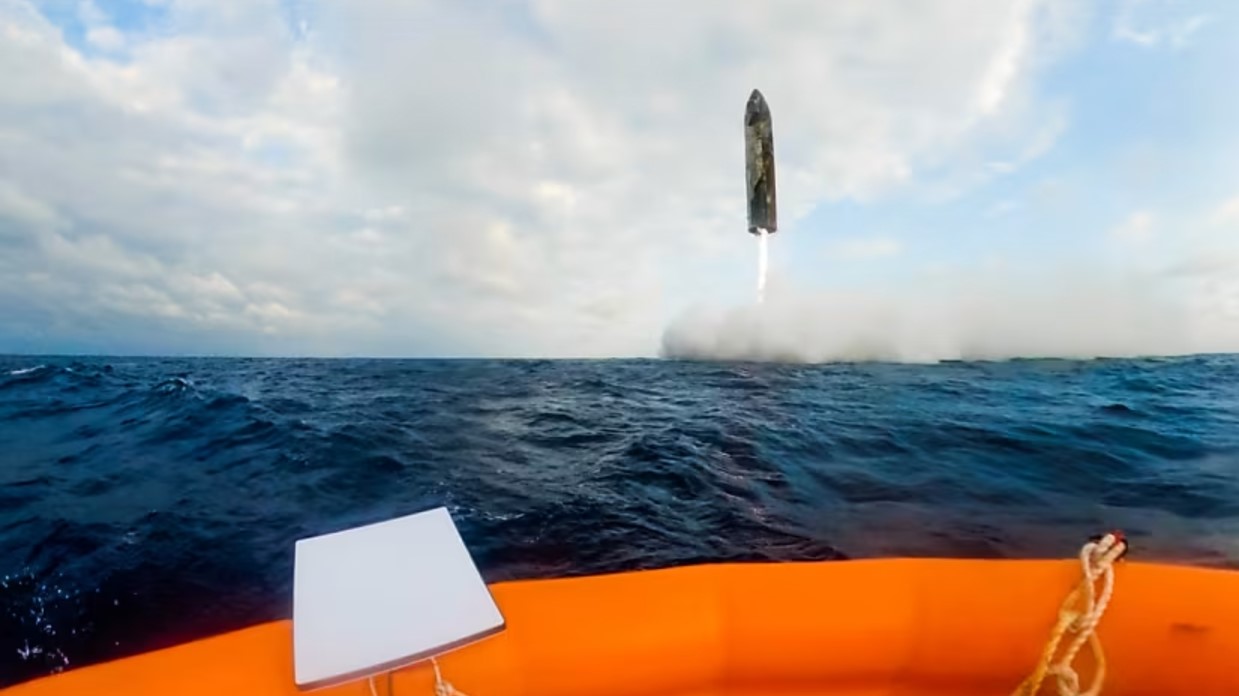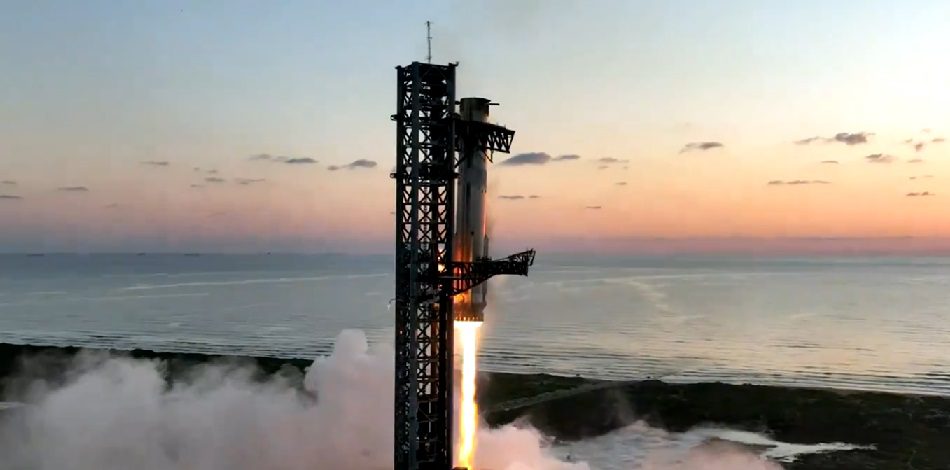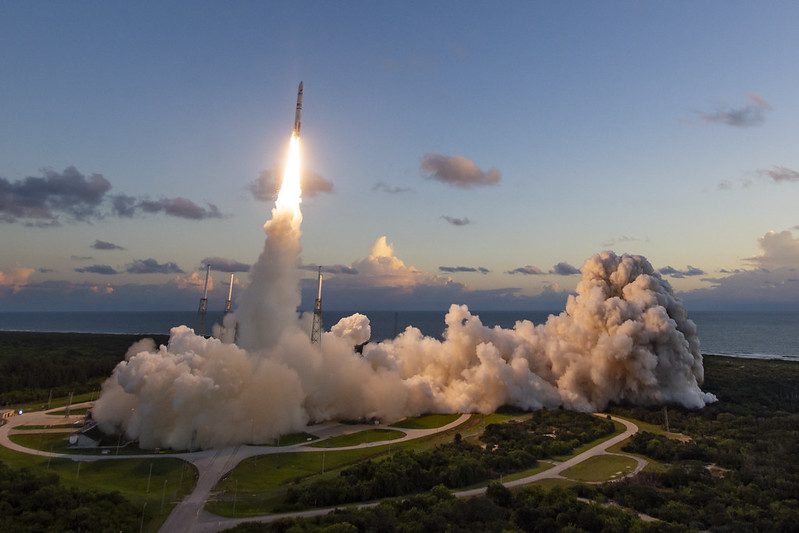Elon Musk has announced via Twitter that his SpaceX rocket firm will fly a re-entry test vehicle as part of its BFR/BFS research. This project aims to produce an all-reusable rocket system capable of return not only from low Earth orbit (LEO), but also from the Moon and Mars. The new upper-stage vehicle, a scaled-down version of the BFS, will be test flown on a Falcon 9 in June 2019. The craft will not make vertical landings as its principal purpose is to prove that it can re-enter the Earth’s atmosphere intact without failure. Musk believes the technique of approaches to vertical landings is now fully proven.
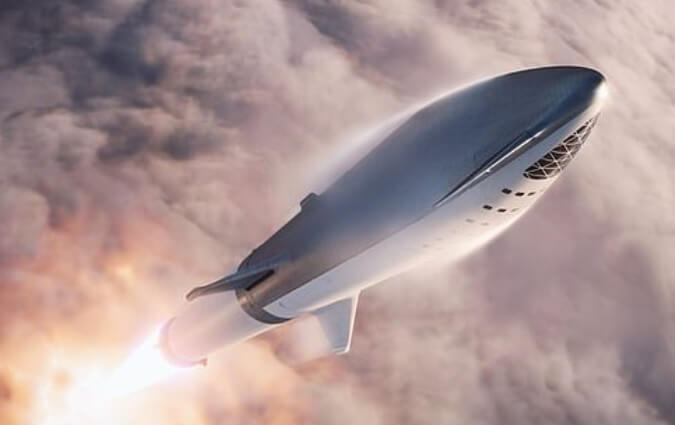
Illustration showing the BFS (Big Falcon Spaceship) upper stage being launched by the BFR (Big Falcon Rocket) first stage. Courtesy: SpaceX
Musk has previously hinted at the use of an inflatable ballute/aerobrake system with BFS and it is thought that this new test flight will employ this technology. In April 2018 he tweeted that “SpaceX will try to bring rocket upper stage back from orbital velocity using a giant party balloon.” Such a system would be needed, especially for return from the Moon and high-energy orbits as the energy that must be dissipated at these increased re-entry velocities would be too high for conventional thermal protection systems, on a high lift-to-drag vehicle, to cope with.
Such systems have been tested for re-entries from LEO and considered for Mars atmospheric entry. At the British Interplanetary Society’s symposium on Mars exploration, space designer Bob Parkinson used one in his suggestion for a cut-down human landing mission, with an inflatable heat shield for the Mars aerobraking and later entry/landing approach portion of the mission.
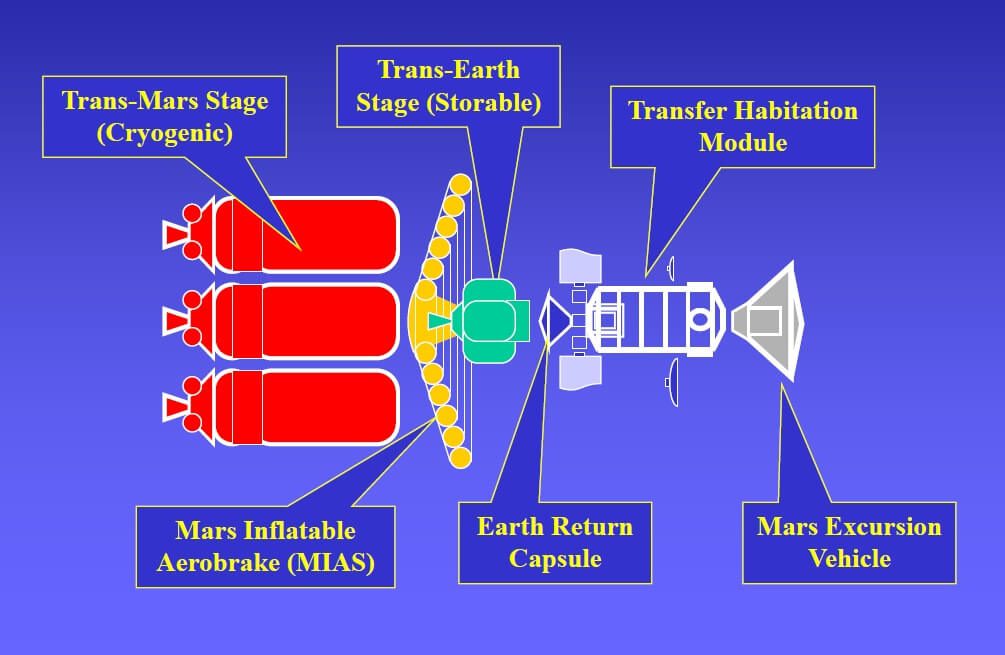
Bob Parkinson’s plan: elements needed for basic human landing mission to Mars. Courtesy: Bob Parkinson
Ballute systems work by reducing the craft’s density and hence the “ballistic coefficient”, which, in turn, reduces the peak heating flux. There is also the benefit of increasing the radius of the re-entry body, which further reduces the heat flux. The definition (from Wikipedia) of the ballistic coefficient is:
Where:
- BCPhysics = ballistic coefficient as used in physics and engineering
- M = mass
- A = cross-sectional area
- Cd = drag coefficient
- = density
- = characteristic body length
Exactly how such a device would be deployed remains to be seen, but a deployment from the nose cap on the BFS seems the most likely. By the way, while the ballute heat shield would probably have to be discarded to allow a vertical landing of the BFS, it might be recovered for later reuse from a splashdown sea landing.
Update on 20 November 2018: Via a Twitter announcement, Elon Musk has formally renamed the BFS “Starship” and the BFR first stage, the “Super Heavy”.
Comment by David Todd: If the planned use of a ballute for the BFS (Starship) re-entry is true, then this solves the riddle posed by the original announcement of the BFR/BFS. This writer has previously suggested (based on his Master’s Thesis research) that its high lift-to-drag ratio would cause too much aerothermodynamic heating to survive a re-entry into the Earth’s thick atmosphere from super-orbital speeds i.e. in a Mach 30+ return from the Moon or Mars. This inflatable heat shield technique solves the problem. However, the trick is to produce a ballute of material that is heat resistant enough to survive the high temperatures while still capable of being inflated.





